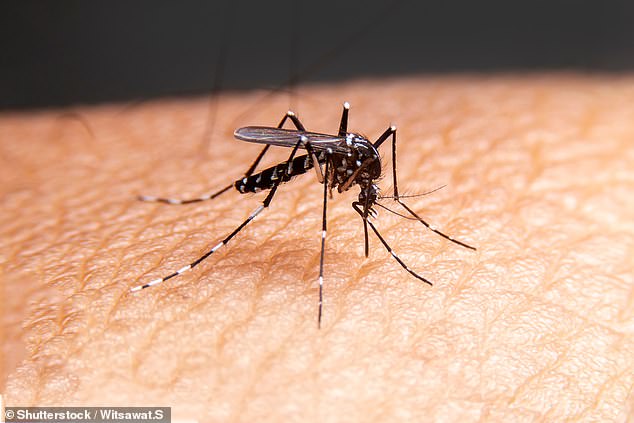Deadly dengue fever health warning for Aussies travelling to Europe this year: ‘It’s a plague’
Australians who choose to ‘chase the European summer’ could be putting their health and even their lives at risk, experts have warned.
More and more travelers are being struck by a group of insidious diseases that cause crippling fevers, terrible stomach pains, bleeding gums and even death.
Diseases dengue, yellow fever, the Nile virus and even the Zika virus are all spread by mosquitoes that once avoided Europe in favor of warmer climates.
But now three species of mosquitoes have set up self-sustaining colonies across Europe, putting travelers and locals at risk.
Cases of dengue alone have doubled in 2023 and are expected to ‘explode’ in 2024, with one seasoned traveler describing it as ‘a terrifying plague’.
Australians who choose to ‘chase the European summer’ could be putting their health and even their lives at risk, experts warn
According to the European Center for Disease Patrol and Prevention, residents of and travelers to 13 countries including Austria, Bulgaria, Croatia, France, Germany, Greece, Hungary, Italy, Malta, Portugal, Romania, Slovenia and Spain are at serious risk.
The disease-carrying insects used to come with travelers from warmer climates such as Africa, limiting the risk of a serious illness spreading far and wide.
Two species of mosquitoes cause the most health problems across the continent: Aedes albopictusknown for transmitting dengue, chikungunya and zika viruses and Aedes aegyptia vector of yellow fever, dengue, chikungunya and Zika viruses.
And although they are not yet in bloom, the insects are also on the rise in Belgium, Cyprus, the Czech Republic, Liechtenstein, the Netherlands, Slovakia and Sweden.
The Culex pipiens mosquito, responsible for spreading the West Nile virus, is a concern and also occurs in Europe.

The disease-carrying insects used to come with travelers from warmer climates like Africa, limiting the risk of serious diseases spreading far and wide – now they live there year-round
The number of locally acquired cases of dengue fever doubled to 130 last year and there were a total of 4,900 cases.
Between 2010 and 2021, there were a total of 70 local cases of the disease, making the spike to 130 cases last year alone a ‘problem’ for authorities.
Early data shows that 2024 will break these records.
However, it appears that the number of Nile virus cases is decreasing: 713 cases were detected last year, leading to 67 deaths.
This is in line with the record high of 1,133 cases the year before.
Dengue is the second most common cause of fever in unwell international travelers.
Symptoms of dengue include high fever (40°C/104°F), severe headache, pain behind the eyes, muscle and joint pain, nausea, vomiting, swollen glands and rash.
If symptoms worsen after two days – or as soon as the fever subsides – urgent medical attention is required.
Every year, 36,000 people die from dengue worldwide.
The risk of death among people with severe dengue is 0.8% to 2.5%, and with adequate treatment it is less than 1%. However, those who develop significantly low blood pressure can have a mortality rate of up to 26%.
